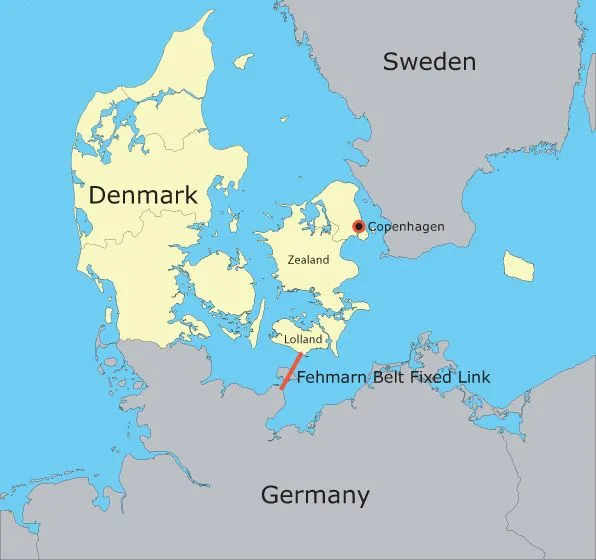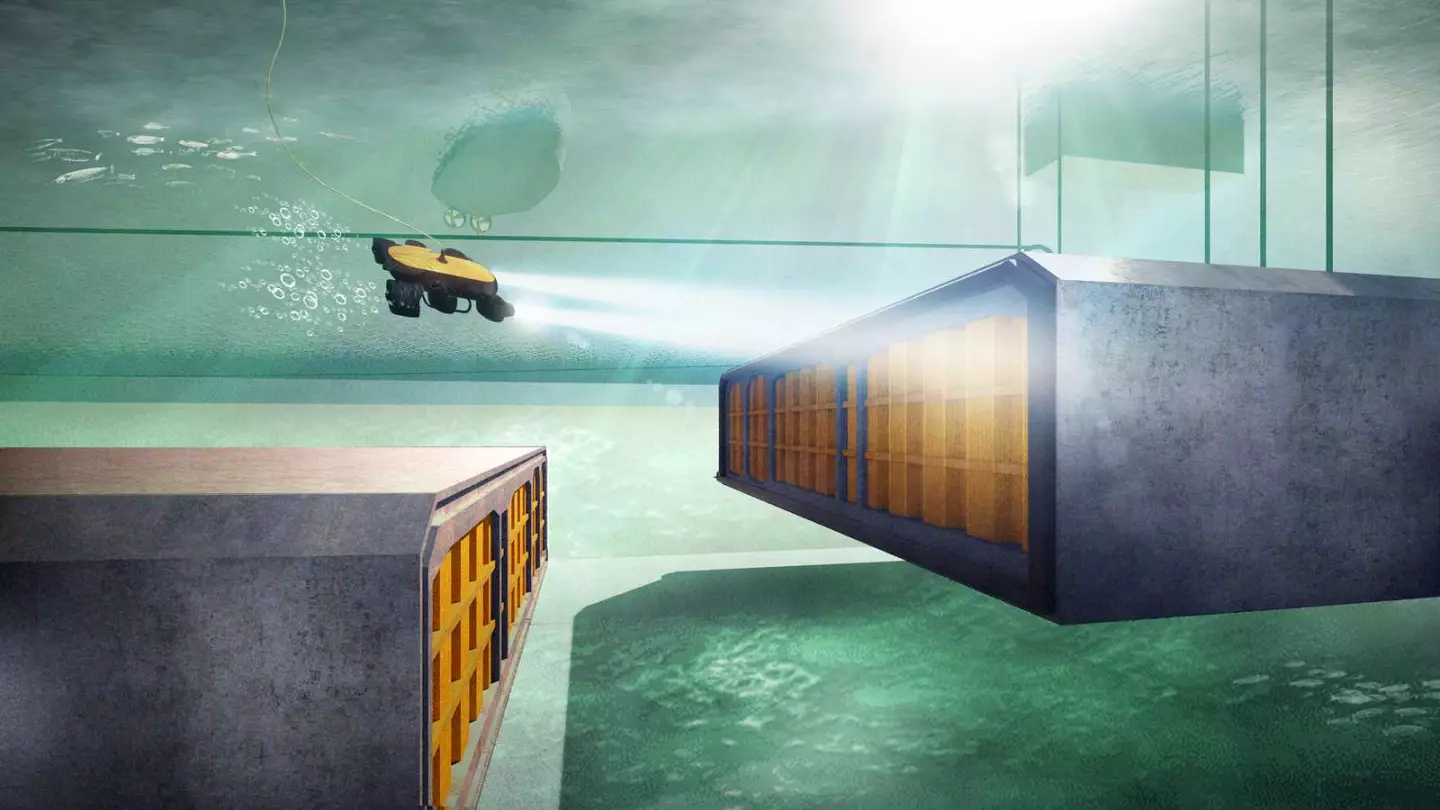views
Project Highlights
- The Fehmarnbelt fixed link will connect Scandinavia with Central Europe via Germany.
- Once completed, the Fehmarn tunnel will reduce the journey time between Rødbyhavn (Denmark) and Puttgarden (Germany) to 7 minutes by train and 10 minutes by vehicle.
- The Fehmarn belt link will be a greener alternative to ferry service between Rødby and Puttgarden and offset CO₂ released by trucks and ferries.
- Built at a cost of EUR 7 billion, the 18 km long immersed tunnel will be the longest undersea tunnel once completed in 2029.
- Femern A/S is responsible for the design and planning of the project, with support from Germany, Denmark, and Sweden.
- The tunnel fabrication factory is currently the world’s largest for concrete structure production.
- The tunnel trench construction to produce 15 million cubic meters of soil which will be used to reclaim new land around the project.
The Fehmarn Belt fixed link or Fehmarnbelt fixed link (Danish: Femern belt tunnel) is a part of the Fehmarnbelt project - an undersea tunnel passing through the Fehmarn strait in the Baltic sea between Germany and Denmark.
The Fehmarn belt tunnel will be a direct link between central Europe and Scandinavia, connecting the Danish Island of Lolland to the island of Fehmarn in northern Germany. The 18,2 km long tunnel will cut travel times between the 2 metropolitan cities of Copenhagen and Hamburg to nearly half.
The construction work of the Fehmarn link project officially began on 1 January 2021. The Fehmarnbelt link immersed tunnel will be the world's longest immersed tunnel with both rail and road facilities when it’s finished in 2029.
Fehmarn Belt Location

Image Source: Pintrest
The Fehmarnbelt tunnel is being built over the Fehmarn strait in the Baltic sea between Germany and Denmark. The tunnel will connect the Lolland on the Danish side and Fehmarn on the German side.
Background of the project
A bridge was initially proposed for the link across the Fehmarn strait. Feasibility studies were conducted during the 1990s. From the early 2000s, German and Danish transport engineers actively planned for a fixed-link bridge. The bridge would have carried both a four-lane motorway and two electrified rail tracks.
An inquiry of commercial interest was performed in the spring of 2000 to investigate the prospects for private sector delivery of the Fehmarnbelt Fixed Link. To narrow down the risk variables identified in the commercial inquiry, the traffic prediction was updated, and train revenue was reviewed. Following that, two of the models submitted in the commercial interest inquiry were recalculated using the amended cost estimation methods.
German-Danish Treaty
A state treaty was signed between the Federal Republic of Germany and the Kingdom of Denmark on 3 September 2008 for the construction of the belt link. Due approvals were taken in both the Danish Parliament and German Parliament for the implementation of the treaty.
Project Objectives
The major objective of the Femern tunnel is to improve the connectivity between Denmark and Germany. However, it will also bring entire northern Europe closer to the Scandinavian peninsular.
Travel times from Germany, the Netherlands, France, or Belgium to destinations such as Gothenburg, Stockholm, Copenhagen, or Oslo will be reduced. Moreover, a high-speed train connection via the Fehmarn Belt will make travel more efficient than ever before, while reducing the current 50 minutes by ferry to 10 minutes by car.
Part of the Trans-European Transport Network (TEN-T)
The fixed link across the Fehmarn Belt, as well as landside connections in Germany and Denmark, are listed as elements of the TEN-T (Trans-European Transport Network) core network in Regulation (EU) No 1315/2013 of 11 December 2013.
As per the EU Commission, the Fehmarnbelt Fixed Link is one of the 30 prioritized transport infrastructure projects of the TEN-T network (an extensive network of roadways, railways, waterways, airways, and telecom networks across continental Europe and Scandinavia). Thus, the EU granted a subsidy of EUR 587 million and 540 million for the world’s longest-immersed tunnel project.
Construction
Conventional tunnel boring was not possible due to the poor condition of the soil in the Fehmarn belt. This threw a challenge for engineers to come up with a new engineering solution and an immersed tunnel was devised to be the best viable option. This meant that the tunnel will be built ashore in the form of 89 hollow concrete elements that would be floated out, installed, and then linked underwater.

Image Source: Euronews
Preparatory work
The first step in the construction phase is to build the tunnel trench on the sea bed. For this, large-scale dredging was required to take out huge quantities of sand and soil. Dutch dredger companies Boskalis and Van Oord were contracted for the dredging work to dig out 15 million cubic meters of soil.
Femern A/S (a subsidiary of Sund & Bælt Holding A/S) is the in-charge of designing and planning the link. It has proposed to build a tunnel fabrication yard with six production halls for casting the tunnel’s 89 concrete elements. Each tunnel element is 217 meters long and weighs around 73,000 tonnes. It contains two motorway tubes, two electrified rail tracks, and a service passage.
Supporting infrastructure
The supporting infrastructure for the construction of the tunnel includes fresh water and sewage pipes. Power cables and substations were built to provide the construction site with electricity. Furthermore, construction roads were also built for logistic supply.
The construction of the ferry port east of the Puttgarden began in October 2021, followed by the outer retaining dam as part of the tunnel portal. Temporary ports are being constructed on both sides to two down the materials and tunnel elements from the fabrication site to the belt.
Financing the Fehmarnbelt Tunnel
The cost of the entire project is estimated to be approximately EUR 10 Billion. As per the state treaty between Germany and Denmark, the latter will is responsible for financing the entire project. As a result, it will retain ownership of the tunnel after its completion and collect tolls from users. Moreover, being part of the TEN-T’s core infrastructure projects, the EU has granted a subsidy of EUR 587 million and 540 million to cover the initial expenses.
Contractors involved in the project
Two consortia of contractors, Fehmarn Link Contractors (FLC) and Fehmarn Belt Contractors (FBC) are responsible for the construction. Another consortium of contractors, Femern Systems Contractors (FSC), is responsible for installing advanced electro-mechanical technology.
Femern Link Contractors (FLC)
FLC has the following companies in the consortium:
Contractors:
- VINCI Construction Grands Projets S.A.S. (France)
- Per Aarsleff Holding A/S (Denmark)
- Wayss & Freytag Ingenieurbau AG (Germany)
- Max Bögl Stiftung & Co. KG (Germany)
- CFE SA (Belgium)
- Solétanche-Bachy International S.A.S. (France)
- BAM Infra B.V. (Netherlands)
- BAM International B.V. (Netherlands)
Subcontractor: Dredging International N.V. (Belgium)
Consultant: COWI A/S (Denmark)
Fehmarn Belt Contractors (FBC)
FBC has the following companies in the consortium:
Contractors:
- Boskalis International B.V. (Netherlands)
- Van Oord Dredging and Marine Contractors B.V. (Netherlands)
Consultants: SWECO Danmark A / S (Denmark)
Femern Systems Contractors (FSC)
FSC consists of the following companies:
Contractors:
- Sociedad Ibérica de Construcciones Eléctricas, S.A. (SICE) (Spain)
- SICE Tecnología y Sistemas, S.A. (Spain)
- Cobra Instalaciones y Servicios S.A. (Spain)
- Moncobra, S.A. (Spain)
Consultants:
- Cobra Instalaciones y Servicios Internacional, S.L. (Spain)
- SICE Inc. (USA)
- SICE Nordics AB (Sweden)
- SICE NZ Ltd. (New Zealand)
- SICE PTY Ltd. (Australia)
Employment opportunities
The construction site provides several thousand jobs. Adding to that, the local companies in the region have benefited from new business opportunities for supplying raw materials, goods, and services.
Environmental impact of the new tunnel
A team of, 150 biologists, engineers, and geologists studied the effects of the construction of the tunnel. They did not find any major impacts on the ecosystems surrounding the tunnel. The project owners are obliged to comply with the noise and vibration level and to check the sediment spill pollution boundaries as per a German court verdict.
The seafloor will be leveled again when the tunnel elements are placed, implying that the impact on the marine habitat will be insignificant, and breeding and migrating birds will actually have more reserved areas on the Lolland coasts than before the construction began.
Wrapping Up
To summarize, the Fehmarnbelt tunnel project is currently Europe's biggest civil engineering project, and when completed, it will bring all of Europe geographically closer than ever. The effects on the environment, travel times, and Fehmarn and Lolland as a tourism and wildlife destination will be immense, and the tunnel will be a truly modern engineering marvel.
Follow up on the latest development on the Fehmarn Belt Tunnel project. Our Global Projects and Tenders Tracker is a one-stop solution for tracking and finding new business leads from 200000+ ongoing and upcoming projects across construction, infrastructure, oil and gas, energy, and EV sectors.












Facebook Conversations